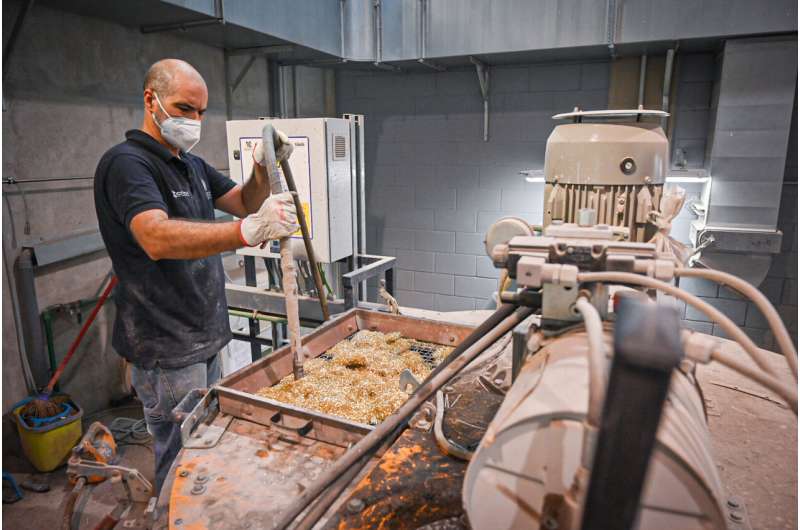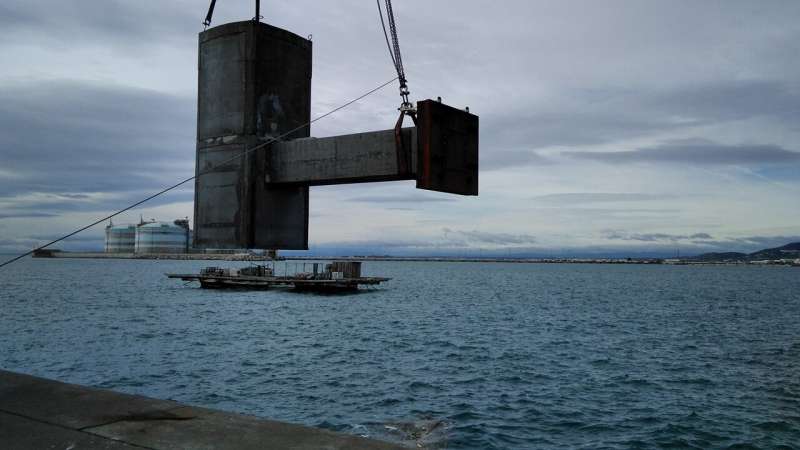New ultra-resistant and self-repairing concrete materials

A team from the Universitat Politècnica de València (UPV) and the Politecnico di Milano has designed new ultra-resistant and self-repairing concrete materials. They have 30% more durability compared to conventional high-performance concrete in cracking situations. In the event of a crack, it is able to repair itself automatically thanks to the application of self-repairing techniques.
"These properties are possible mainly thanks to the design of the mixture and the use of components such as crystalline additives, alumina nanofibers and cellulose nanocrystals, which are capable of improving the ability of the material to repair itself", says Pedro Serna, researcher of the Institute of Concrete Science and Technology (ICITECH) of the Universitat Politècnica de València.
Another advantage of these new cementitious materials is the reduction of both ordinary and extraordinary maintenance work, being able to exceed the usual limits (50 years) of current design codes. As regards their applications, they are especially suitable for infrastructures subjected to extremely aggressive environments, such as constructions located in or near the sea, and for geothermal power plants as well.
"In this project we are demonstrating how the durability of cementitious materials becomes a characteristic that can be designed through the synergy between the composition of the material and the structural conception. We have designed and are testing new cementitious compounds with the capacity for structural self-repair in the cracking phase, which is the usual state faced by a reinforced concrete structure", points out Marta Roig Flores, researcher at ICITECH.

In this way, ResHEALience represents a change from the concept of durability of the material understood as passive protection against external aggressions to an "active" vision of the same.
Tested in six large-scale pilot structures
In the validation phase, the ultra-high-strength cementitious compounds developed in the project have been used to build six large-scale pilot structures that are currently being analyzed under real structural operating conditions. Two of them are in the Valencian Community (a float designed for floating wind towers, built in collaboration with Rover Maritime and the UPV, which is installed in the port of Sagunt, and a raft for mussels installed in the port of València by the Valencian company DRC), plus two in Italy, one in Ireland and one in Malta.
These structures are constantly monitored with UPV technology, specifically, by means of an extensive network of sensors supervised by a team from the IDM Institute, which makes it possible to verify their performance over time. It is a self-contained sensor system, configured like an electronic tongue, that provides real-time and continuous information on the durability of the structure. In addition, it helps pinpoint the risk of corrosion and the presence of aggressive agents that can affect structures.
"These data allow the experts in the field to verify the good condition of the structures, or, as the case may be, to adopt the necessary measures to prevent the damage from worsening, by using the most appropriate, economical, and less affected method of protection or repair on the operation of the structure", explains Juan Soto, a researcher at the IDM Institute (Universitat Politècnica de València).
Provided by Universitat Politècnica de València



















